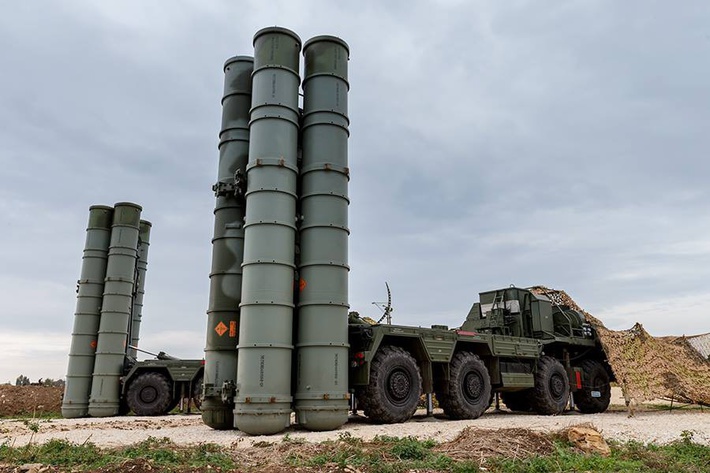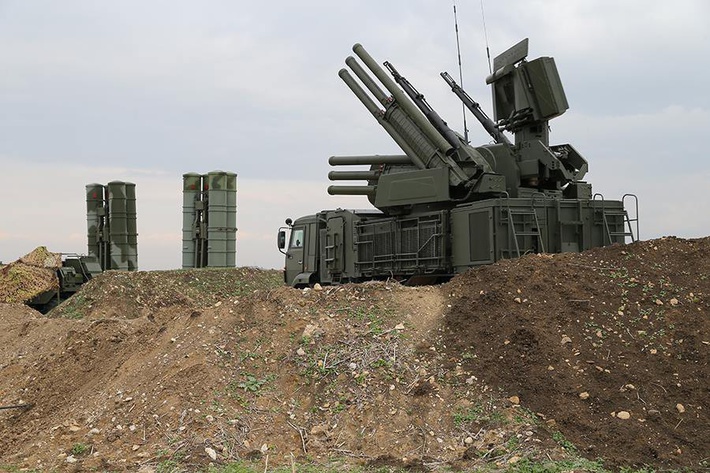Zool
Junior Member
I agree ROE's are typically an internal set of engagement rules. However the airspace in Syria today is not your typical benign environment. There are high risk of unwarranted incidents or accidents which can be mitigated by a set of transparent rules be it engagement or de-conflicting. Uncertainty enhances risk. Precisely the reason why the US emphasis of ensuring de-conflicting rules are agreed upon.
I have no intention of re-opening the debate over the Turkish/Russian plane shot down incident because they have been debated to death whether on the legality, reasonableness, sensibility or technicalities of the facts. The only reason I made reference to it is the point that Turkey has made known up front on what the engagement rules would be. Whether you agree with actions of Turkey in shooting down the Russian is irrelevant because my main point is that the engagement rules were known and communicated and this is a fact. Why is this important? The reason is when we talk about any hypotheticals and the S-400 being an instrument as a payback, rules become important because besides Turkey there are other coalition aircraft operating within the Syrian airspace.
Non transparency is a justifiable position provided such ambiguity doesn't present a risk or threat to other planes operating within Syrian airspace.
Your description of probable scenario involving Turkish and other coalition aircraft is IMHO a recipe that invites scope for unwarranted conflict. How does the Russians operating the S-400 ID between Turkish and other coalition planes? What exactly is meant by assess as threat? What conditions qualified as a threat? Why is Turkish aircraft subject to higher chance of being engaged separate from that of threat assessment? Under what established rules of engagement has Turkish aircraft becomes fair game? Has Russia/Syria announced a no fly zone for Turkish aircraft?.
Do you seriously believe that such an attitude towards taking down Turkish planes would not come with mistakes. There is a history to learn from :
(I)Tornado and F-18 shot down by Patriot in 2003;
(ii)TU-154 shot down by SA-5 in 2001;
(iii)A-300 shot down by USS Vincennes in 1988; and
(iv)Most recently Boeing 777 shot down by Buk
Russian actions do not exist in a vacuum. There are coalition aircrafts operating in that airspace. You seem to have this blase attitude that the S-400 will just light up, paint the aircrafts, lock on them and the coalition aircrafts will just ignore it without some form of agreed de-conflicting rules.
So what I'll do is reply generally and include comment on certain specific points that you raise. I will let you have the last word from there as I find keeping strictly to the topic of S-400 in Syria difficult and somewhat pointless without discussing the wider strategic landscape - it is one system among many that come into play. Most everything else will be deemed OT and I'm not interested in having a reply I put some thought into, deleted as a result.
Deconflicting is achieved at a basic level through Mil-Mil communication and ideally an enhanced level of coordination between forces; culmination of that is Joint Operations. Unfortunately Mil-Mil communication is usually the first thing to get cut in a dispute, which is obviously counter intuitive. But S-400, F-22, Su-30SM or other systems deployed to the region do not affect the level of risk in the region if the actors (Russia, US, Turkey etc) operate in good faith, maintaining communication about their operations. Russia says it has been and was doing so in the case of the Su-24 when relaying it's AOE and altitude to CENTCOM (I find it hard to believe NATO partner Turkey did not have that information). The altitude at which these aircraft fly put them out of reach of IS and so the countries flying them should not be at risk of an air engagement to begin with; Turkeys action changed that calculus. Enter S-400.
What I have said is that I believe Russia would follow an Identification, Threat Assessment chain for any external aircraft heading toward Syrian airspace. Detection and Tracking would happen with land, sea and air assets (that includes S-400) all of which are relativly close to the Turkey/Syria boarder where another incident could occur. In all of this mind you, Russia maintains Mil-Mil communication with CENTCOM, French Forces (not sure where that command has been established) and presumably the British now too (have not seen that contact officially confirmed).
My guess on specific tactics for dealing with an unknown aircraft headed towards a region of Syria where the Russians are operating, is that they would scramble or vector already airborne Su-30SM's to intercept and identify. I presume that if the aircraft were US or French it would not go any further than an escort while they remained in the Russian AOE. If it was a Turkish Fighter that crossed the boarder into Syria or locked onto a Russian aircraft I suspect the Russian Flankers would lock and engage them. The S-400 would likely be used in a support role with tracking and as force-multiplier against any additional hostiles sent after the Su-30SM's. Alternatively if Russia continues strikes with Su-24 and Su-34 now armed with short-range AAM and no Su-30SM escort, I would again see the S-400 playing a support role and engaging any aircraft that launched on the Russian strikers during their operations. In each case having the S-400 is a deterrent to further attacks on Russian aircraft. Which is what I have said for the last couple posts now.
You'll note that while I have said I believe Russia will look to exact a military toll on Turkey for the Su-24 loss, nowhere in this or any other post have I suggested S-400 would be used to "light up" (radar lock) another aircraft at leisure, without a specific scenario unfolding. Tracking & Radar lock are not the same thing. I think you make some assumptions in your last paragraph, some false, regarding my perceived use of S-400 as well as my attitude -- a little surprising that comment, as I've been discussing events from my perspective based on the information I have and the way events have unfolded thus far, while not attributing your own difference in view to an attitude. But I will leave it there as I have now thoroughly explained my take on Russia-Turkey and how S-400 comes into play. Cheers.



